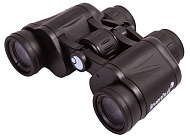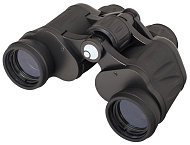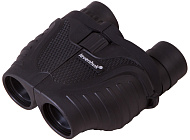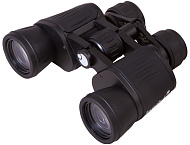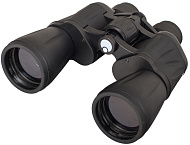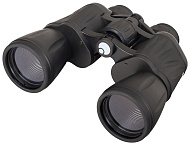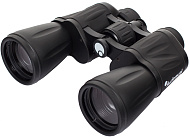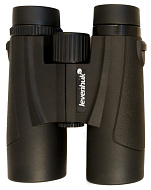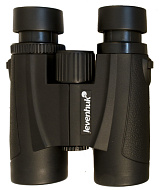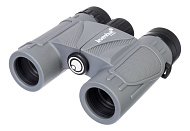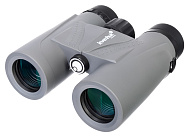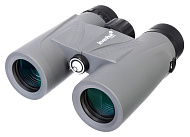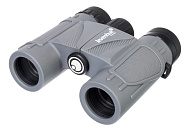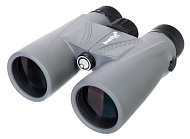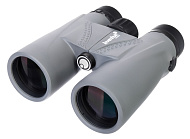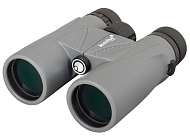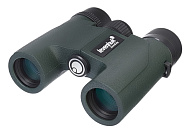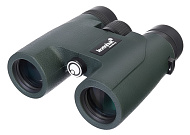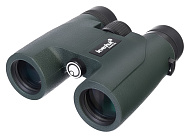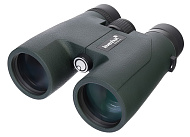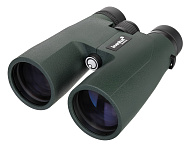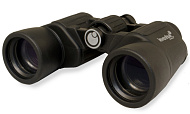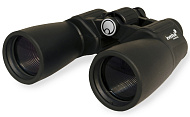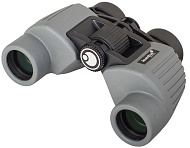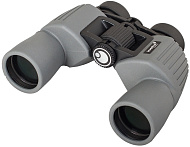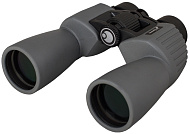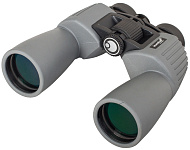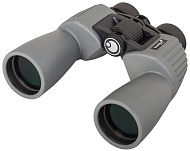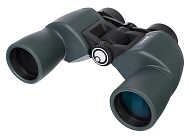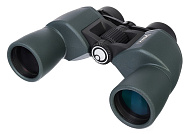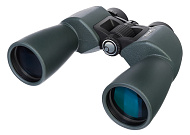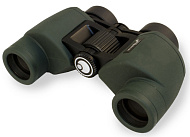A revolutionary approach to selecting Levenhuk binoculars
Attention!
Do not look directly at the Sun through the binoculars! This can cause permanent eye damage.
In the spring of 2015 Levenhuk completely renewed the binoculars assortment available for customers in the United States – the Levenhuk Bino and Levenhuk Energy binoculars series was replaced with brand-new, improved binoculars from the Levenhuk Karma, Sherman, and Atom series. The total number of announced new products is 47!
When looking at all the variety of binoculars available on the market, it may seem an impossible task to make the right choice. But we can help make choosing the right binoculars easy! This article makes the selection process much easier and faster and won’t leave any room for doubt!
Three simple selection criteria:
- Application: What is you reason for having binoculars?
- Price: How much money are you willing to spend on binoculars?
- Appearance: What shape and color do you prefer?
Application: What is your reason for having binoculars?
The very first question you should ask yourself is why you need binoculars. At this stage you will be able to eliminate models that do not suit you purposes, narrowing down the selection for further consideration.
Binoculars for everyday use
Do you like spending your free time in nature enjoying picturesque countryside landscapes, watching birds and animals? Or maybe you are a frequent visitor of different sporting games; maybe urban architecture is your passion. If you recognize yourself in this description then what you need is a compact and lightweight binoculars model. Compact size and light weight are important for your convenience throughout the whole journey – large models will weigh you down, making you experience unnecessary and distracting hand fatigue. The binoculars’ task is to strike you with beautiful views, definitely not to cause you discomfort.
Average binoculars for everyday use weigh around 5-25 ounces. Typically such binoculars have 6x to 8x magnification power and 25 to 40 mm objective lenses. Roof prism binoculars have more compact dimensions than full-sized Porro prism models and, what’s noteworthy, the image quality in compact models won’t suffer.
Binoculars for field observations
Field binoculars are widely used by hunters, fishermen, guards, sailing enthusiasts and active tourists. Compared to models for everyday use, these binoculars have large dimensions and more powerful technical characteristics. Such binoculars usually have 10-12x magnification and 40-50 mm objective lenses. High magnification power allows you to observe very distant objects in detail. The powerful high aperture lenses are able to collect more light and, therefore, produce bright, vivid views. Classic field binoculars usually weigh from 1.5 to 2.5 pounds.
If you are choosing binoculars for observations in the field, don’t forget to check to see if they have a reliable waterproof and shockproof shell. Also, make sure you will be able to set the chosen model on a tripod - there should be a special jack for installation at the base of the body.
Advanced binoculars
By “advanced” level we mean binoculars that meet individual user requirements to certain technical characteristics.
Such requirements may include:
- Observation of very distant objects. If an object of interest is located at a very far distance from you (and you don’t have a chance to get any closer), consider models with high magnification power: from 12x to 16x.
- Observation of nearby objects. If most of the time you observe objects from a near distance, pay attention to the minimum focusing distance (or close focus). The smaller the value, the closer you can get to an object.
- Wide field observations. If you need to cover a large area at one glance in order to not miss any single detail of the action, consider models with wide fields of view: wide angle binoculars have fields of view of at least 390 yards/1000 feet.
- Observations in poor visibility conditions. If you frequently observe at dusk or dawn, consider high aperture binoculars. To determine the binoculars’ light-gathering capacity, you should pay attention to exit-pupil diameter, which must be from 4.5 to 6 mm or even higher.
- Observation in high humidity. If you observe in bad weather conditions, near the river or lake, you should take the precaution of choosing hermetically sealed models filled with nitrogen. The nitrogen gas will prevent moisture from entering the inner parts of the instrument, and will protect the optics from fogging in high humidity and rapid temperature changes.
- Most realistic images. To produce more realistic views, binoculars must have complex, multi-element optical system. Take a look at models with improved multi-element eyepieces.
Detailed technical characteristics are specified for each model presented in our catalogue. You can find them on the product pages on the “Specifications’’ tab.
Price: How much are you willing to spend on binoculars?
After the first stage when you determined suitable models for your purposes, you have to think about your budget. Unfortunately, our budgets are often strictly limited, and sometimes we cannot afford models that we like most. That’s why our second criterion is the binoculars’ price.
Levenhuk Atom, Karma, and Sherman are new binoculars series created to provide you with high-quality observations without gouging your budget.
- Levenhuk Atom: 27.95 EUR
- Levenhuk Karma: 62.95 EUR
- Levenhuk Karma PLUS: 79.95 EUR
- Levenhuk Karma PRO: 179.95 EUR
- Levenhuk Sherman: 79.95 EUR
- Levenhuk Sherman PLUS: 129.95 EUR
- Levenhuk Sherman PRO: 204.95 EUR
What exactly do we pay for when buying a pair of binoculars? The most expensive part is the optical system. There are two main types of binocular design: Porro and Roof. Each optical design has its advantages. Let’s take a look:
Porro prism. Classic field binoculars, simpler and more popular optical design. Porro prisms are easier to manufacture. The loss of light in the prism system is essentially considered zero, which ensures higher image quality. This design, however, makes binoculars wider and heavier.
Roof prism. More elaborate optical design as compared to Porro prism. Allows making binoculars more lightweight and compact, with more elegant appearance. Provided images are not as bright though, compared to equally priced Porro prism models.
The other important factor in price setting is prism glass type. BK-7 optical glass is the most inexpensive one; the second, by cost, is BaK-4; and finally, the most expensive is ED-glass. The main difference between these types of glasses is their refractive index. The refractive index determines the angle of incidence at which total internal reflection occurs. The higher the refractive index is, the smaller the angle of incidence. That makes it possibile to use more powerful objective lenses and, therefore, binoculars size can be reduced.
The prism size and number of elements in eyepieces and objective lenses also affect the price. Large prisms and multi-element objectives are able to create unbelievably realistic images. Of course, the larger the prism and the more elements in the optical design, the larger the price will be. That is to be expected, since the manufacturing process becomes more complicated.
One more factor that affects pricing is the type of optical anti-reflective coating applied to the surface of lenses and other optical elements. Anti-reflective coating improves image contrast and clearness. The coating can be a multi-layer, single-layer, full or partial. The more layers of coating that are applied, the brighter and sharper are the images you will get. The price, of course, will also be higher.
Appearance: What shape and color do you prefer?
The final step in choosing – the customer’s personal preferences for the binoculars’ appearance and additional features, which don’t affect technical characteristics directly.
- Color of the body. New binoculars models of the basic Levenhuk binoculars series come in three colors: black, light gray and dark green.
- Folding design. The binoculars’ folding halves allow you to adjust interpupillary distance (as all people have a different distance between the eyes) as well as make the instrument more compact and hence more convenient to store.
- Adjustments for individual eyesight. If your vision is not perfect and you feel uncomfortable observing while wearing glasses, then you should choose a model with eyepiece diopter adjustment.
- Observing with glasses on. If, however, you are used to observing with your glasses on, choose models with twist-up eyecups and long eye relief. This way your glasses won’t touch the binoculars’ lenses. Further, twist-up eyecups block unnecessary light coming from the sides.
- Tripod adaptability. Sometimes it’s more convenient to install binoculars on a tripod; for example, if binoculars are heavy or you need to observe for a long time without changing your position. Binoculars adaptable to a tripod have special jacks for mounting a tripod adapter (purchased separately). This jack is located on the lower part of the binoculars’ body or between their halves. A ¼” mounting jack allows you to install the binoculars on any camera tripod.
- Kit. Usually binoculars come with eyepiece and objective lens protective caps, as well as a pouch, a strap and a cleaning cloth. Protective caps and a pouch protect the optics from damage and contamination during storage. A neck or wrist strap provides for additional comfort. The cleaning cloth is useful for everyday use – a soft, lint-free cloth to easily remove dust and slight contamination with no harm to the optics.
The choice is made!
We are sure that with this simple and easy-to-understand method, you will easily choose the ideal binoculars the very first time.
Buying Levenhuk binoculars, you get:
- Reliable device made of quality materials safe for people and the environment
- Crisp images produced by optical glass covered with anti-reflective coating
- Comfort of use due to additional functionality
- Lifetime warranty on each pair of binoculars
Levenhuk binoculars quick reference:
- Level: entry level
- Optical design: Porro and roof prisms
- Quality and affordable binoculars with embossed splash-proof shells of black color
- Optical elements are made of fully coated BK-7 glass
- Level: entry level
- Optical design: roof prism
- Compact binoculars in black reinforced shells
- Optical elements are made of fully multi-coated BaK-4 glass
- Level: advanced
- Optical design: roof prism
- Waterproof shells of light gray color with relief decoration
- Improved three-element eyepieces; optical elements are made of fully multi-coated BaK-4 glass
- Level: advanced
- Optical design: roof prism
- High-strength nitrogen-filled bodies with rubber armoring of army green color
- Improved four-element, fully multi-coated eyepieces; optical elements are made of fully multi-coated BaK-4 glass
Levenhuk Sherman
- Level: entry level
- Optical design: Porro prism
- Classic field binoculars in waterproof embossed shells of black color
- Optical elements are made of fully multi-coated BaK-4 glass
- Level: advanced
- Optical design: Porro prism
- Classic field binoculars in waterproof shells of light gray color
- Improved four-element eyepieces; optical elements are made of fully multi-coated BaK-4 glass
- Level: advanced
- Optical design: Porro prism
- Classic field binoculars in sturdy nitrogen-filled shells of dark gray color
- Improved five-element eyepieces; optical elements are made of fully multi-coated BaK-4 glass
Any reproduction of the material for public publication in any information medium and in any format is prohibited. You can refer to this article with active link to levenhukb2b.com.
The manufacturer reserves the right to make changes to the pricing, product range and specifications or discontinue products without prior notice.



